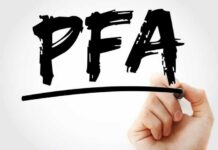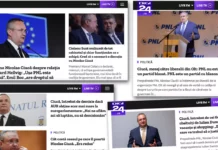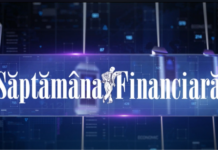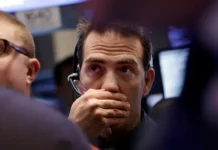On May 2nd, we published a report outlining numerous issues at Icahn Enterprises (IEP). The company responded on May 4th by failing to address any of the issues we raised, reiterating its $2 per quarter dividend and promising to address the issues later “at length”.
Given that Carl Icahn has styled himself as a 50+ year warrior for corporate transparency, we expected he would provide clarity on the issues we highlighted. Yesterday, Icahn Enterprises released its quarterly results, presentation and its response to our report.
In its response, Icahn Enterprises failed to address every key issue we raised. Instead, it rehashed its prior opaque and inadequate disclosures. Perhaps most importantly, the company failed to disclose basic details of Carl Icahn’s margin loans, which we strongly suspect represent a near-term critical threat to IEP unitholders.
Perhaps The Most Pressing Question Raised in Our Report Concerned Carl Icahn’s Pledging Of Over 181 Million IEP Units (60% Of His Personal Holdings) For Margin Loans
Despite Promising To “Respond At Length” To The Issues Raised In Our Report, Icahn Enterprises Offered No New Details
Instead, It Reported More Pledges By Icahn, Which Now Total 202 Million Units (~65% Of His Personal Holdings)
Carl Icahn owns roughly 84% of IEP. The company is named after him. He is the Chairman.
As of the most recent quarter-end, Carl has pledged ~65% of his personal holdings (i.e., ~55% of the company) for loans of unspecified size and unspecified terms, for unspecified purposes.[1] [Pgs. 1, 7, 48]
As noted in our earlier report, Icahn had not disclosed “basic metrics around his margin loans like loan to value (LTV), maintenance thresholds, principal amount, or interest rates.” This is still the case.
Unitholders deserve this information in order to understand the risk of margin calls should IEP unit prices revert toward NAV, a reality we saw (and still see) as inevitable.
Rather than providing these important details, in IEP’s response yesterday, the company instead offered a perfunctory response that “like any investor, Mr. Icahn may use his IEP equity as an asset in any appropriate manner.”
In its newest filings, IEP disclosed that as of May 8, 2023 Icahn had increased his pledge by about 11.7% from prior levels, to 202.6 million IEP units, valued at $6.5 billion as of yesterday’s closing price. [Pg. 48] No further detail was provided.
The new metrics represent a significant increase in pledging activity from year-end 2022, when Icahn had pledged 181.4 million IEP units, which were worth over $9 billion at the time.
Annual Reports Indicate That Icahn Added $3.4 Billion In Cash To His Investment Funds Since 2014
Where Did the Money Come From?
We Strongly Suspect Carl Icahn Pledged His IEP Units For Billions In Margin Loans And Reinvested Up to $3.4 Billion In Proceeds Into His Investment Funds, Which Generated Losses Of Roughly 53% From 2014 To 2022
We find the lack of a specific response by Icahn to such important and straightforward questions to be revealing.
We strongly suspect—based on our analysis that we had not previously published—that Carl Icahn has borrowed billions, and reinvested some, or all the proceeds, into his own investment funds.
These funds subsequently generated significant losses, which could pose an overleveraging risk for both Carl Icahn himself, and IEP unitholders.
Our analysis, based on IEP’s filings, shows that despite Icahn’s investment funds generating 53% losses from 2014 to 2022-year end, Icahn’s personal investment increased, potentially owing to him drawing new cash from margin pledges which was then reinvested in the funds.
We took several factors into consideration to arrive at this estimate:
1. Icahn’s personal portfolio is comprised almost entirely of holdings held in IEP and his investment fund. Per Forbes:
“Icahn’s primary investing vehicle is publicly traded Icahn Enterprises. He also runs an investment fund made up of his personal cash and money belonging to Icahn Enterprises.”
Similarly, since at least as early as March 2017 (as far back as our database goes,) Jefferies research has said that “all (new) investments made by Carl Icahn are conducted through IEP”. In short, the investment funds and IEP holdings comprise all or most of his assets, and have for quite some time.
2. Every year, IEP filings report the gains or losses in Icahn’s Investment Funds. Those filings show that since 2014, Icahn’s investment funds have lost a cumulative 53%.
3. Every year, IEP filings report “the total fair market value of investments in the Investment Funds made by Mr. Icahn and his affiliates”. In other words, the value of Icahn’s holdings in the investment funds are marked to market and reported every year. What this should mean, for example, is that if Icahn were to have a $1 billion investment, and the investment funds lost 10% that year, filings would disclose him having $900 million remaining in the following year.
Keeping that in mind, we see from the filings that Icahn maintained and even increased his overall personal investment size through the years despite IEP reporting sustained portfolio losses. In order to maintain his investment size, we estimate he would have needed to personally contribute $3.4 billion in that time frame.

The poor investment performance and pledges may have already caused financial strain as of April, one month prior to our report.
In the company’s 10-Q released yesterday, Icahn disclosed that on April 14th, post quarter-end, Icahn redeemed $867 million from his investment funds:
“Mr. Icahn and his affiliates redeemed $867 million from the Investment segment representing a pro-rata portion of the cash in the Investment segment attributable to Mr. Icahn and his affiliates, which was paid to Mr. Icahn and his affiliates on April 14, 2023. This redemption does not change our liquidity in the Investment segment.” [Pg. 32]
Icahn could easily clear up these questions, but thus far he has chosen not to. We believe Icahn should immediately disclose:
- the size of his margin loans
- the use of the margin loan proceeds, and specifically whether all or a portion have been reinvested into IEP’s investment funds
- the terms of his margin loans, and
- whether any additional units have been pledged or loans have been repaid
The Performance Situation Has Worsened—Icahn Failed To Mention That Post Q1, Key Public Long Positions Have Fallen Further, By An Estimated 13.8%, Representing $1.03 Billion In Addition Post Quarter Losses
IEP disclosed that in Q1 it had lost $270 million, driven by investment losses of 4.1%. [Pgs. 3, 35] It nonetheless reported a “relatively flat” indicative NAV of $5.6 billion, owing in substantial part to mark-ups of assets in its less liquid and private portfolio (more on this later) and cash supplied by open market sales of units through its at-the-market (ATM) offering. [Pg. 23]
Beyond the losses incurred as of quarter-end, Icahn failed to mention the post-quarter performance of public portfolio holdings, which have declined precipitously.
We estimate that IEP’s long book has lost an additional $1.03 billion in value since Q1 has ended. The declines are led by IEP’s position in CVR Energy, which was valued at $2.334 billion as of Q1 quarter end. Since then, the stock has lost almost 22%, representing an estimated $509 million NAV decline as of yesterday’s close.
Other key detractors have been Bausch Health Companies, which is down over 26% since Q1 quarter end and Newell Brands, down over 23% since Q1 quarter end. [2]

IEP Provided No Additional Color On Its Opaque Book Of Private Investments Or Their Respective Valuations
Evidence Continues to Suggest That IEP’s Book Of Private And Less Liquid Assets Is Severely Overvalued
For Example, IEP Marked Its Real Estate Assets Modestly Up In The Quarter, From $455 Million To $457 Million. Almost Immediately After The Quarter End, A Key Tenant Defaulted On A Property Representing $218 Million in NAV
Less liquid and private assets collectively comprise ~28% of IEP’s gross indicative assets, or ~$2.5 billion, as of the most recent quarter end. [Pg. 6] As we wrote in our earlier report, we suspected (and still suspect) that the portfolio is severely overvalued.
As one example we provided, Icahn carried the value of its auto parts division at $381 million in December 2022. The division declared bankruptcy a month later. Yesterday, IEP disclosed that it wrote down its auto parts investment by $193 million, a 51% write-down from its value just one month prior, owing to the bankruptcy. [3]
Icahn provided no additional color on other private assets mentioned in our report, including the Trump Plaza in Atlantic City, which was razed to the ground in 2021 and is held at a still-unknown carrying value.
We had also flagged Icahn’s irregular illiquidity premium of 204% that it had applied to a thinly-traded, public meat packaging business called Viskase. Icahn provided little additional color on the assumptions driving its valuation, and marked the position up from $243 million in December to $285 million in March owing to “adjusted EBITDA” improvements.
IEP’s latest results provide further evidence that the private portfolio marks are vastly inflated. IEP marked its private “real estate” assets up modestly in the quarter, from $455 million at year end to $457 million. But its 10-Q noted that almost immediately post quarter-end, a major tenant at one of its key properties defaulted, likely necessitating another write-down to follow in Q2:
“Subsequent to March 31, 2023, a significant tenant of a commercial high-rise property was notified of default for non-payment. The tenant stated they are unable to cure the default status and the lease has been terminated. We consider this default, along with other facts and circumstances, a triggering event for potential impairment…As of March 31, 2023, this property had a NAV of $218 million”. [Pg. 33]
Given that these valuation write-downs only seem to happen after something “breaks”, we strongly suspect the remaining assets in the private portfolio are vastly inflated.
Icahn Failed To Address Another Key Issue—That Dividends Have NOT Been Supported By Free Cash Flow
The Company’s Own Tax Documents Make Clear That Dividends Have Largely Been a “Return of Capital”
In Other Words, Investors In IEP Are Simply Being Given Some Of Their Own Money Back As Dividends, As IEP Continues To Dump Units Via Its Open-Market Unit Sale Offerings
IEP failed to address how its dividends have been paid out through cash on hand rather than actual investment gains, focusing instead on how it intends to generate strong returns in the future.
The point isn’t really debatable, as evidenced by IEP’s own tax disclosures.
The company’s most recent distribution tax notice makes clear that 100% of the distribution is in excess of IEP’s cumulative net income (which was negative). More granularly, 86% of the distribution represented a “return of capital” (i.e., investors getting their own money back) with the balance being interest or portfolio company dividend income.

The deal Icahn is making to retail investors is, essentially, “buy ~$9 worth of value for ~$32 and I’ll give you back $2 of your own money per quarter, for free.”
Previously, retail investors had bought in, likely owing to Icahn’s status and reputation. Given the current unit prices, some seem to be realizing that Icahn, the famed corporate raider, may not be paying 15%+ cash per year out of the kindness of his heart.
Disclosure: We Are Short Units of Icahn Enterprises L.P. (NASDAQ: IEP) and Have Initiated A Short Position In IEP Bonds
Legal Disclaimer
Use of Hindenburg Research’s research is at your own risk. In no event should Hindenburg Research or any affiliated party be liable for any direct or indirect trading losses caused by any information in this report. You further agree to do your own research and due diligence, consult your own financial, legal, and tax advisors before making any investment decision with respect to transacting in any securities covered herein. You should assume that as of the publication date of any short-biased report or letter, Hindenburg Research (possibly along with or through our members, partners, affiliates, employees, and/or consultants) along with our clients and/or investors has a short position in all stocks or units (and/or options of the stocks or units) covered herein, and therefore stands to realize significant gains in the event that the price of any unit covered herein declines. Following publication of any report or letter, we intend to continue transacting in the securities covered herein, and we may be long, short, or neutral at any time hereafter regardless of our initial recommendation, conclusions, or opinions. This is not an offer to sell or a solicitation of an offer to buy any security, nor shall any security be offered or sold to any person, in any jurisdiction in which such offer would be unlawful under the securities laws of such jurisdiction. Hindenburg Research is not registered as an investment advisor in the United States or have similar registration in any other jurisdiction. To the best of our ability and belief, all information contained herein is accurate and reliable, and has been obtained from public sources we believe to be accurate and reliable, and who are not insiders or connected persons of the units covered herein or who may otherwise owe any fiduciary duty or duty of confidentiality to the issuer. However, such information is presented “as is,” without warranty of any kind – whether express or implied. Hindenburg Research makes no representation, express or implied, as to the accuracy, timeliness, or completeness of any such information or with regard to the results to be obtained from its use. All expressions of opinion are subject to change without notice, and Hindenburg Research does not undertake to update or supplement this report or any of the information contained herein.
[1] We found evidence that Icahn has been pledging IEP units for over a decade, according to Delaware Uniform Commercial Code (“UCC”) filings. Delaware UCC filings related to Icahn controlled entities indicate IEP unit pledges dating back to 2011. The pledges that we found, while not showing outstanding amounts loaned, loan rates or specific unit pledges, appear to be active and have expiration dates in 2024, 2026, and 2027. The counterparties to the pledges are Morgan Stanley and Bank Of Montreal.
[2] Analysis includes IEP’s updated investment values as of yesterday’s presentation, along with holdings as of Icahn’s latest 13-F. [Pg. 5] Note that 13-F positions may have adjusted in the interim, thus the calculation represents an estimate.
[3] IEP also recognized a “$188 million related party note receivable” associated with the bankrupt auto parts division with no further details on the note provided.









































